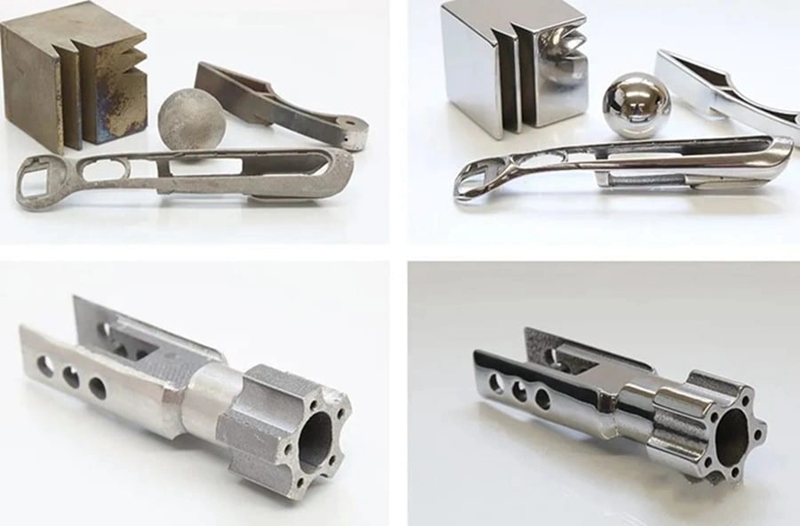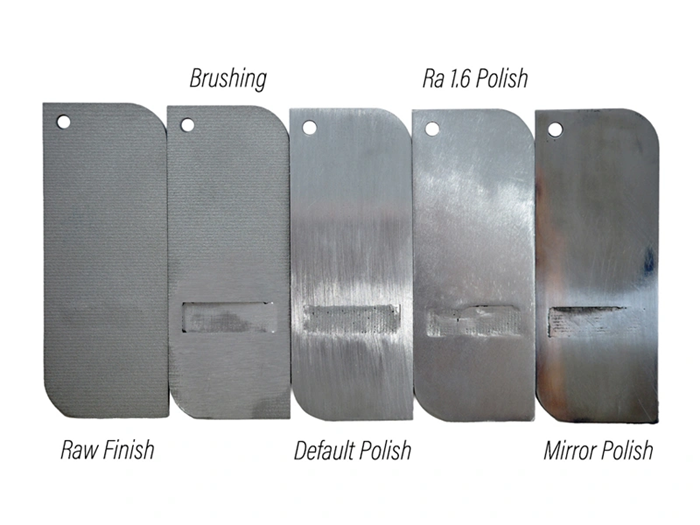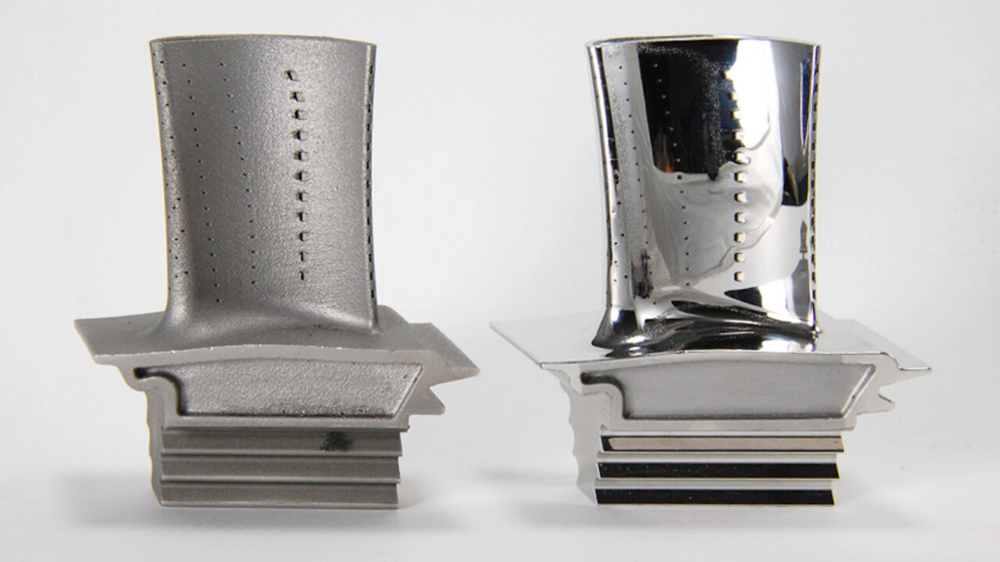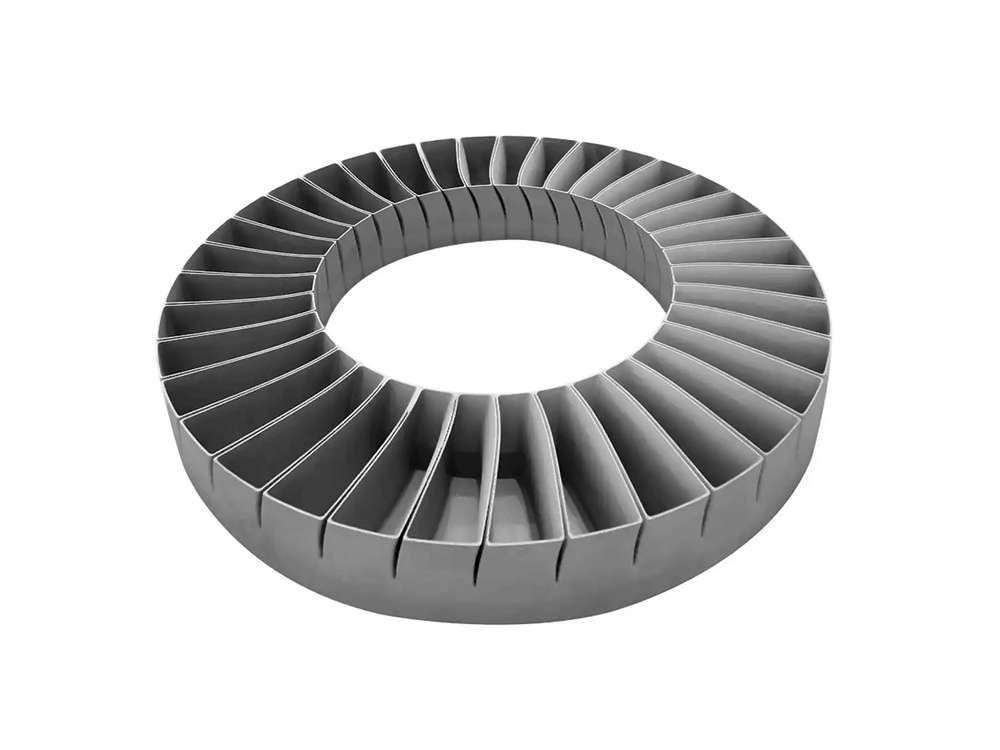
Titanium 3D print technology has revolutionized manufacturing. It lets creators build complex, lightweight components from Ti6Al4V (Grade 5), a popular titanium alloy made up of 90% titanium, 6% aluminum, and 4% vanadium . The parts come out of the printer with a matte finish that doesn’t shine like traditional milled titanium . This unique surface texture creates new challenges and possibilities for manufacturers and designers.
Titanium stands out with its amazing strength-to-weight ratio and resistance to corrosion, yet getting the right surface finish needs special post-processing steps. The right polishing techniques can turn raw prints into sleek, working parts. Many people want to know about finishing these premium 3D prints. The material costs between $200-$400 per kilogram , and the finishing process needs technical skill and patience. Ceramic media tumbling offers a solution – it creates a smooth, matte surface after 5+ hours of processing .
This piece dives into proven titanium 3D print finishing techniques. You’ll learn about ways to boost mechanical properties and create beautiful satin or mirror-polished surfaces. These methods work great for small parts needing precise ±0.3mm tolerances or bigger builds up to the standard 400 x 400 x 400mm build envelope . They help you get professional results that strike the right balance between cost, looks, and performance.
Understanding Why Titanium 3D Prints Need Finishing

Titanium 3D prints come with unique surface characteristics that need finishing for most applications. Parts made through metal additive manufacturing differ from traditional manufacturing methods and require specific post-processing techniques to meet desired specifications.
Surface Roughness from DMLS and SLM Processes
DMLS and SLM processes create titanium parts with substantial surface roughness. These components show Ra values around 5 μm after bead blasting. Unprocessed LPBF (Laser Powder Bed Fusion) samples can reach roughness up to 25 μm. Partially melted powder particles stick to the surface and create this uneven texture.
SLM/DMLS processes generate 0.1-0.5 vol% porosity levels that can affect mechanical integrity. Build parameters determine surface quality – angles above 40° create smoother surfaces compared to lower angles. Laser scanning speed plays a crucial role in surface quality. Higher speeds (1100 mm/s) result in rougher surfaces because the material doesn’t melt properly.
Functional vs Esthetic Finishing Goals
Titanium 3D prints need finishing to improve mechanical properties or appearance. Heat treatment helps boost yield strength, while Hot Isostatic Pressing (HIP) removes internal porosity. Surface finishing makes a big difference in mechanical performance. Properly finished components can reach ideal fatigue strength, but as-built specimens only achieve about 30% of potential fatigue limits.
Esthetic finishing creates specific visual and tactile qualities. Medical and automotive applications need polished, reflective surfaces. Parts that need better aesthetics or fewer sharp edges benefit from tumbling that creates uniform matte finishes.
How to Finish a 3D Print Based on Application
Each part’s intended use determines the best finishing approach. Medical implants, especially dental applications, need controlled roughness. This roughness helps osseointegration by improving bone-implant contact and speeding up healing. What might seem undesirable in other applications becomes beneficial for implant performance.
Aerospace components need smooth surfaces with minimal porosity to maximize fatigue resistance. Industrial applications often require corrosion resistance through electropolishing or anodizing. Manufacturers must balance dimensional accuracy with desired surface characteristics. Aggressive finishing methods can damage critical features and tolerances.
Techniques for Improving Mechanical Properties
Post-processing titanium 3D prints goes beyond just making things look better – it wants to lift their mechanical properties. Three techniques work best to strengthen these additively manufactured titanium components.
Heat Treatment for Yield Strength Enhancement
Heat treatments make a big difference in improving titanium 3D prints’ mechanical properties. These printed titanium components show positive microstructural changes when heated between 550°C and 750°C for about 2 hours. The size of lath-shaped α grains gets smaller as heat treatment temperatures rise from 550°C to 750°C, while small-sized needle-shaped α′ grains become denser. Better tensile properties come from this refined microstructure. Heat-treated samples have higher tensile strength, elongation, and shrinkage than as-built specimens.
ß-titanium alloy prints respond well to heat treatment at 480°C. This is a big deal as it means that tensile strengths can exceed 1,600 MPa while keeping good uniform elongation at 5.4%. These results show a 50-70% improvement over as-built samples, making them the strongest among all 3D printed metals by weight.
HIP for Eliminating Internal Porosity
Hot Isostatic Pressing (HIP) uses uniform high pressure (100-200 MPa) and high temperatures (typically 1040-1200°C) to get rid of internal porosity in titanium 3D prints. The material becomes denser through this process, which removes voids that could weaken its mechanical integrity.
Titanium 3D prints treated with HIP can reach a fatigue limit strength of 550 MPa after 10^7 cycles – matching annealed and forged material . HIP also reduces the anisotropic properties you’d normally find in as-built parts. While HIP might slightly lower overall strength, it makes the material tougher, more ductile, and better at resisting fatigue crack spread.
Shot Peening for Fatigue Resistance
Shot peening bombards the surface with particles (steel shot, ceramic balls, or nut shells) to create helpful compressive stress in the surface layer. This treatment helps titanium 3D prints last up to 20 times longer than untreated samples. Untreated parts usually break after about 10^5 cycles, but shot-peened parts can handle between 5×10^5 and 2×10^6 cycles before failing.
Surface hardness improves with this technique too. Steel shot peening lifts hardness by about 42%, while nut shell treatment improves it by around 30% compared to untreated samples. Ceramic ball and steel shot treatments boost tensile strength by about 3.7% and 4.2% respectively.
Methods for Achieving Esthetic and Smooth Surfaces

Titanium 3D prints need specialized finishing techniques to create smooth, aesthetically pleasing surfaces. The original printer output leaves a rough texture that needs refinement to look good and work properly.
Polishing Titanium for Reflective Surfaces
Creating mirror-like finishes on titanium 3D prints requires a step-by-step approach. Carbide burrs help remove the original support structures and surface irregularities. The next step uses ceramic stones (typically 220 grit) to work on detailed areas before moving to finer abrasives. Professional results come from using diamond compounds in three grades (25, 10, and 3 microns) with felt wheels and calico mops to create exceptional shine. The micromotor speeds should stay around 10,000 RPM to prevent dangerous titanium sparking. Electropolishing is the quickest way to reduce surface roughness to submicron levels—sometimes below 0.01 microns Ra.
Tumbling and Sanding for Matte Finishes
Tumbling works well to create uniform matte surfaces. A wet tumbling process with ceramic media transforms rough prints into smooth, even surfaces in 5+ hours. The surface gets burnished without material loss when dry tumbled with treated media like Pegco™ HC-4. Vibratory finishing differs from tumbling and treats surfaces more aggressively by rapidly agitating media against parts. This reduces average surface roughness by about 80%. Sanding is another good option that starts with coarse grits (100-200) and progresses to ultra-fine papers (1000+ grit).
Vapor Smoothing vs Solvent Dipping
Titanium components don’t deal very well with vapor smoothing. This happens because titanium alloys resist common smoothing agents. Solvent dipping works better for larger parts that don’t fit in vapor chambers. The process starts with chemical etching to remove surface material, followed by solvent immersion. These techniques need careful monitoring because they work quickly and can affect dimensional accuracy if not controlled properly.
Sealing and Coating Options for Harsh Environments

3D printed titanium parts need proper sealing and coating to survive harsh environments. These finishing methods create protective barriers that help components last longer.
Epoxy Infiltration for Airtight Sealing
Epoxy treatments turn porous titanium 3D prints into sealed, airtight components. You can choose between two main methods: manual coating and vacuum infiltration. Manual coating lets you brush epoxy directly onto the part’s surface. This creates an airtight seal that can handle pressures up to 65 psi (448 kPa). The method needs minimal equipment but doesn’t deal very well with internal channels and complex shapes.
Vacuum infiltration works differently. The part goes into epoxy resin under vacuum pressure, which pushes epoxy into all porous areas. The result is a watertight seal that resists high temperatures and chemicals. You’ll need special equipment like vacuum chambers and curing ovens. The process takes about three hours but keeps better dimensional accuracy and gives complete coverage.
Powder Coating for Uniform Protection
Powder coating puts dry, finely ground particles of pigment and resin onto titanium surfaces through electrostatic charge. Heat or UV light cures these particles into a smooth, uniform coating. The finished surface is exceptionally durable without the running or sagging you often see in liquid paints.
The coating comes in different types. Thermoset coatings work best for chemical and heat resistance. Thermoplastic versions give better impact resistance. UV-curable options help the environment by using less energy. Cars, appliances, and outdoor equipment use these coatings to protect against scratches, chemicals, and sun damage.
Electrocoating and Anodizing for Corrosion Resistance
Electrocoating uses electrical conductivity to lay down thin, protective layers on titanium parts. Complex shapes get uniform coverage, and the process creates both functional and decorative finishes.
Anodizing creates a stable oxide layer on titanium surfaces through electrochemical oxidation. At 40V, this treatment produces even oxide layers that cut down wear and corrosion rates substantially. Tests show that anodized titanium 3D prints in Hank’s solution have corrosion rates of just 0.457 mpy, compared to 1.197 mpy in untreated samples. The process makes titanium almost chemically inert and more resistant to wear. It also creates unique colors without dyes, which helps identify medical implants.
Conclusion
Titanium 3D printing offers groundbreaking manufacturing capabilities for complex components. The path from printer to final product needs careful post-processing. Surface finishing turns rough, porous prints into functional, attractive parts that meet strict industry standards. Different applications need specific finishing approaches. Medical implants work better with controlled roughness for osseointegration. Aerospace components need smooth surfaces to maximize fatigue resistance.
Heat treatment, HIP processing, and shot peening boost component lifespan and performance. Heat treatment at the right temperatures can boost tensile strength by 50-70%. HIP removes internal porosity and improves fatigue resistance. Shot peening can make parts last up to 20 times longer than untreated ones.
Esthetics play a vital role based on application needs. Diamond compound polishing creates mirror-like finishes needed for specific uses. Tumbling and sanding give uniform matte surfaces that work well for parts needing balanced looks without losing dimensional accuracy.
Parts used in harsh environments need extra protection. Epoxy infiltration creates airtight seals that handle high pressure. Powder coating shields against environmental factors. Titanium components benefit from anodizing, which creates chemically inert surfaces with better wear resistance and unique colors.
The right finishing technique depends on cost, time, and desired results. Titanium 3D printing is a premium manufacturing method with material costs between $200-$400 per kilogram. Proper finishing helps these components reach their full potential. It turns innovative designs into functional, lasting parts that justify their premium status in modern manufacturing.
FAQs
Q1. What are the main reasons for finishing titanium 3D printed parts? Titanium 3D printed parts require finishing to improve surface roughness, enhance mechanical properties, and achieve desired esthetic qualities. Finishing can also increase corrosion resistance and prepare parts for specific applications like medical implants or aerospace components.
Q2. How does heat treatment affect titanium 3D prints? Heat treatment can significantly improve the mechanical properties of titanium 3D prints. When subjected to temperatures between 550°C and 750°C for about 2 hours, it can enhance tensile strength, elongation, and shrinkage compared to as-built specimens. For some titanium alloys, heat treatment can increase tensile strength by 50-70%.
Q3. What is Hot Isostatic Pressing (HIP) and how does it benefit titanium 3D prints? Hot Isostatic Pressing (HIP) is a process that applies uniform high pressure and elevated temperatures to eliminate internal porosity in titanium 3D prints. It densifies the material, improving fatigue strength, reducing anisotropic properties, and enhancing overall toughness and ductility.
Q4. How can I achieve a mirror-like finish on titanium 3D printed parts? To achieve a mirror-like finish on titanium 3D prints, start with carbide burrs to remove support structures, then use ceramic stones for intricate areas. Progress to finer abrasives, including diamond compounds in three grades (25, 10, and 3 micron) applied with felt wheels and calico mops. Maintain micromotor speeds around 10,000 RPM to prevent titanium sparking.
Q5. What are some effective coating options for titanium 3D prints in harsh environments? For harsh environments, effective coating options include powder coating, which provides uniform protection against abrasion, chemicals, and UV exposure. Electrocoating ensures uniform coverage on complex geometries. Anodizing creates a stable oxide layer that significantly reduces wear and corrosion rates while making the surface virtually chemically inert.

